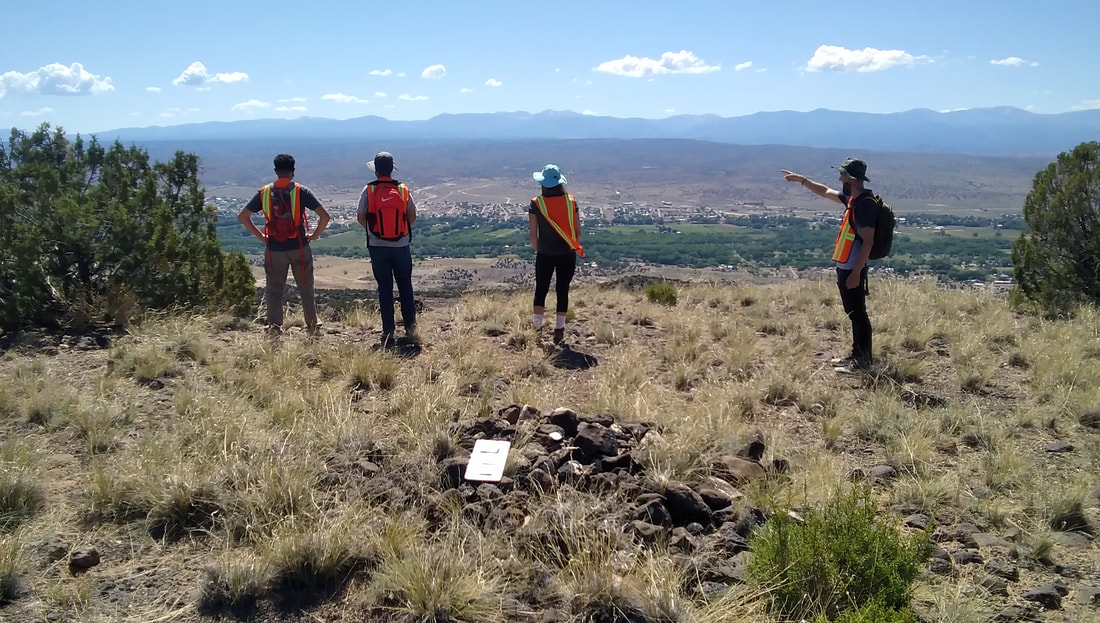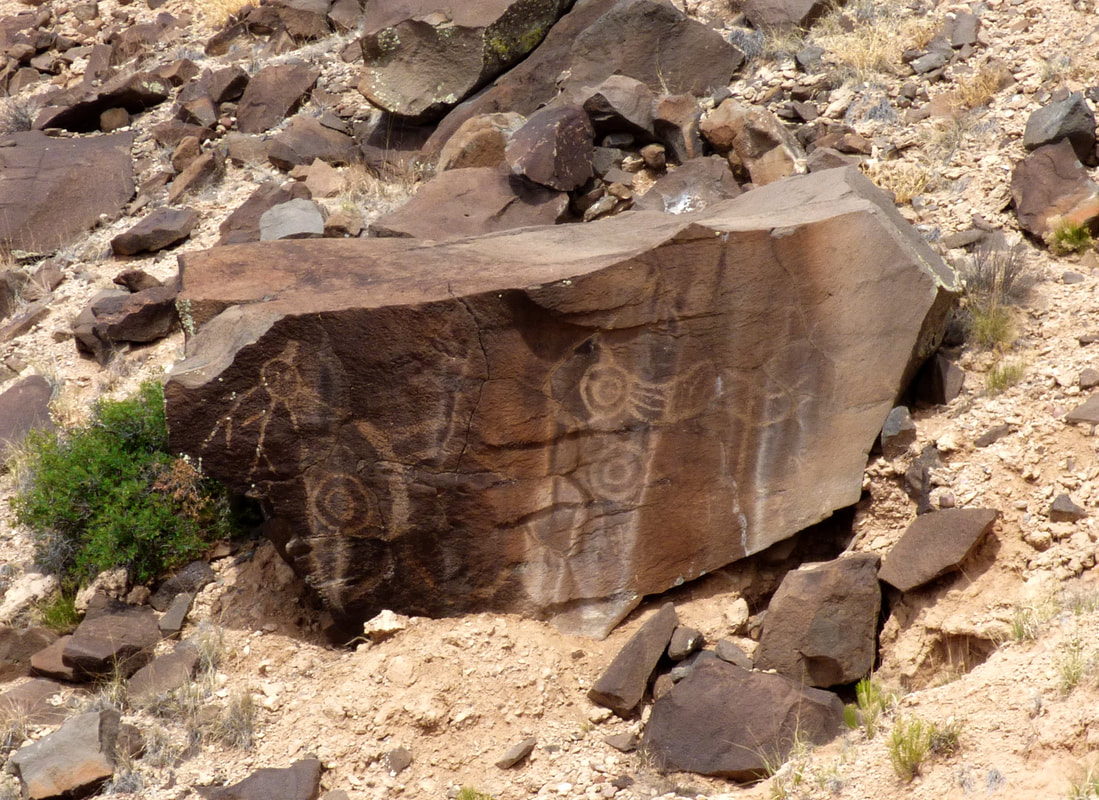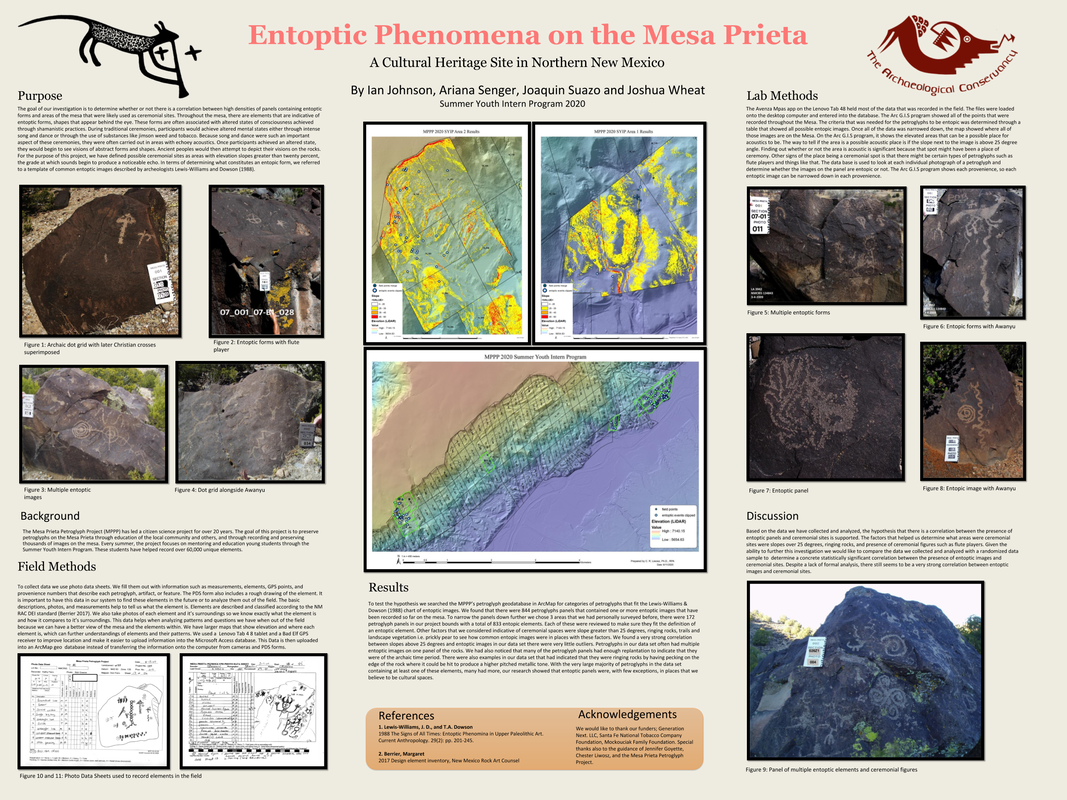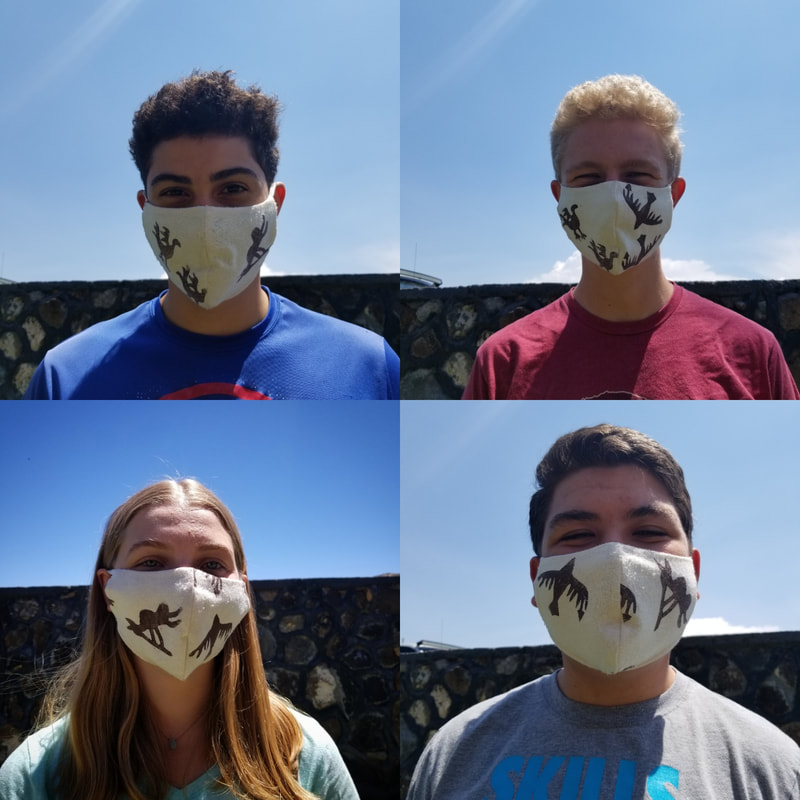CHECK BACK IN EARLY 2021 FOR INFORMATION ON HOW TO APPLY
The 2020 Summer Youth Intern Program kicked off on June 1st of this year, marking the 19th year for the program. Because of the Covid-19 pandemic, MPPP took numerous precautions to ensure the health and safety of the students and staff. First and foremost, we capped our enrollment at only 4 participants, so that we could maintain small group sizes and adequate social distancing. MPPP staff and Youth Interns wore face masks both indoors and outdoors when working in close proximity, and MPPP staff were tested prior to interacting with youth.
With the guidance of the Project Archaeologist Chester Liwosz, Interns Ian Johnson, Ariana Senger, Joaquin Suazo, and Joshua Wheat took some of MPPP's first steps into using Twenty-First Century digital data recording methods - with superb results!
These methods will be adopted by our adult recording teams, and integrated into future youth programs.
Despite the very small team size, the safety measures taken to ensure everyone's health, and a reduced field schedule, the 2020 SYIP team accomplished a remarkable amount. This year, participants tested out a new, mobile-platform-based data recording strategy on some of the most rugged terrain we've worked on in recent years. Interns Ian, Ariana, Joaquin, and Josh rose to the challenges posed by the terrain, and quickly learned new skills for documenting petroglyphs digitally. In addition to speeding up fieldwork and initial post-field data entry, these new methods allowed us to record in ways we never have before, as shown in the several interactive examples below.
Among the new skills interns learned was recording 360° panoramic "photospheres." These photospheres give greater context to the petroglyph panels by showing the surrounding landscape and viewshed. Unlike conventional photographs, 360° panoramas can also be used to make immersive digital experiences, like virtual reality. The first example, above, is of a locus with at least 2 panels located in a shallow wash. Fully repatinated abstract images (visible by rotating the view to look down) indicate these petroglyphs were made during the Early Archaic Period, which lasted from 7,500 to about 1,500 BC. With help from the Project Archaeologist, the interns also made a digital 3D model of this Archaic boulder, also shown above.
Our Interns paired the new mobile-platform mapping app used for recording with 360° photography and 3D modeling to dramatically increase the level of detail in our documentation for some of the more significant petroglyph loci in the areas where the SYIP has been recording in recent years. This year the team collecting a whopping 1.2GB of raw field data, including GPS locations, photographs, and panoramas. This increased amount of detailed data will help MPPP greatly improve the quality and analytic value of our documentation of significant locations, and can be used to inform decisions on how to manage these cultural sites in the future.
While this year's fieldwork component was shortened from the usual eight days to only five, the talent of the youth team and the new, faster recording methods allowed for plenty of time to cover a significant amount of ground in three study areas. In all, the interns hiked about 14.3km (8.9mi) over those five days. With such a blistering pace, we were able to visit a number of remarkable panels. Above, you will find an overview of the highly stylized "Fallen Elk" panel, so named for the ungulate depicted (meaning either a deer or elk), and because it has tumbled partly into a canyon and turned 90 degrees from its original orientation.
Our Summer Youth Interns spent the second week of the program in 'the lab', performing database entry and data analysis on this and previous years' data. They learned useful skills in spatial analysis with ArcGIS, a powerful piece of database software used for advanced mapping in many industries. They also learned how to generate 3D models from a series of dozens of still photographs using a process called photogrammetry, which works on the principle of parallax. One of these 3D models the interns made is shown above, illustrating the aforementioned Archaic panel in great detail.
In addition, the interns worked together to collaborate on a scientific poster, in which they synthesized their data into a research project. This is the first time our students have accessed collected data to study a topic of their own choosing. For this poster (see below) they chose to focus on the contexts of "entoptic images," a type of abstract design believed to invoke processes that happen within the human nervous system. This is an admirably difficult topic for such young scholars to tackle, and speaks to the boldness and brilliance of this year's team. The team learned how to form a research question, create a search query, analyze their data, and synthesize their findings into a poster presentation. They worked together to write their methods, findings and discussion and to design their presentation. This is a big undertaking for only one week of lab work!
On behalf of the Mesa Prieta Petroglyph Project, we are grateful for the hard work, dedication, and skills shown by this year's Youth Interns. These outstanding individuals have contributed significantly to the project in this and previous years. We wish them all the best over the next year and in the future.







